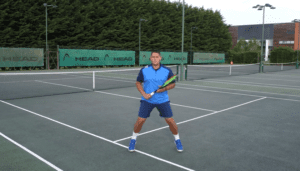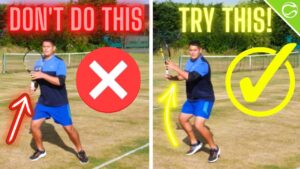
How To Serve and Volley In Tennis
How To Serve and Volley In Tennis
Serve and volley has died out a bit on tour due to the surfaces playing slower and the balls being bigger to help encourage longer baseline rallies. However at club level it is still one of the most effective ways to win points in both singles and doubles.
There are three types of serve and volley.
The first is used the most by players and pros alike, this is when you decide prior to serving that you will committ fully to coming in. This is called a pre planned serve and volley.
The second type of serve – volley is when you anticpate a weak return and are planning to come in if the opponent doesn’t manage to execute a great return. This is not a fully commiteed serve – volley as in option one but is still considered a pre planned serve volley as you are anticipating a weaker return and are ready to pounce.
The third type is when you react to a weak or easy return after the serve. You have not planned to come in on the serve but as the return is easy to attack you take the ball out of the air with a volley.
With all three styles there are a few rules to follow –
-
- Make sure you are following the line of the ball after you serve, for instance, you’ve hit a kick serve out wide on the ad side and you fall off to the left, leaving a huge gap down the line for the opponent to expose
- Split step timing – don’t forget about the all important split step when coming in, a well timed split step will allow you to move in any direction
- Don’t rush – many players tend to rush in and this takes away time on the volley, remember it’s not a race to touch the net, close in as fast as you can but remember the split step is more important than getting in close
Here are some other tips –
1. On serve try tossing the ball further inside the baseline to encourage good weight transfer forwards
2. Fully commit to coming to net prior to the serve (if using option one)
3. Time the split step so that you land when the opponent makes contact with the return
4. Identify as early as possible where the return is going and move up to the ball
5. If the volley is low use it like an approach shot, if the volley is high look to finish the point or set up for the finisher



